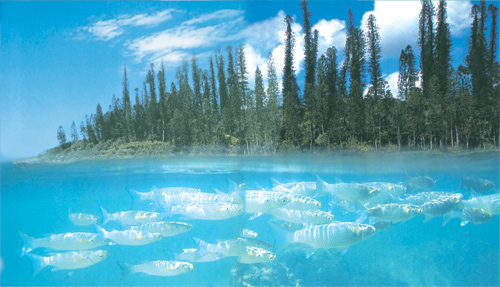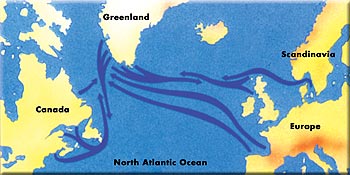Bigotry: The Dark Danger
The Miracle of Migration in Animals
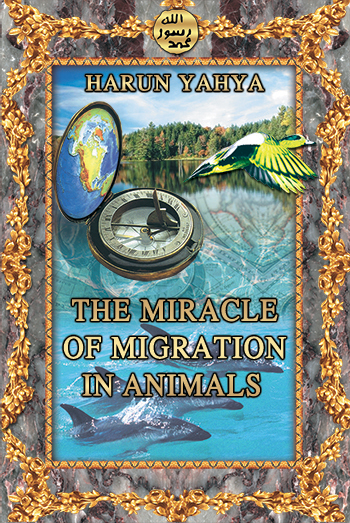
DOWNLOAD THE BOOK
CHAPTERS OF THE BOOK
< <
4 / total: 7
Part 3 - Animals Migrating in The SeaFrom the shallow waters to the depths in all the oceans of the world, and particularly in tropical regions, and in the seas a number of creatures migrate in various ways. Some creatures migrate from time to time, while others do so continuously. One of the most notable marine migrants is the lobster. Long Distance Ocean Travelers: Lobsters
Towards the end of autumn, weather conditions in the region inhabited by the lobster are very changeable. Due to high air pressure, it becomes very windy. The sky darkens, rain falls, and the temperature drops. At the same time, the wind creates large waves in the shallows inhabited by lobsters, making the water turbid. This signals the start of the lobsters' migration season. It is not known exactly why lobsters migrate in autumn or how they time it, but available information points to the influence of environmental factors. Sudden temperature changes and intense water movements may prompt lobsters to change their environment. The important point is that lobsters notice the climatic changes, understands that these conditions constitute a risk, and take precautions accordingly. But to take these precautions, they must know what the best habitat is, and how to get there easily. After making these decisions, they head off in a highly conscious fashion. Lobsters' Remarkable Migratory MethodLobsters usually migrate to calmer waters, and their journey is a remarkable sight. As many as fifty lobsters come together to form a column, with each lobster positioning itself so as to touch the one in front. In this formation, they walk along the sea floor for a number of days and nights.35 The convoy members maintain their respective positions by establishing continuous contact with the abdomen of the lobster in front, using their antennules and the tips of their foremost legs. Even if their antennae are removed, this contact is not disrupted. A lobster whose antennae have been removed will increase the frequency with which it touches the lobster in front with its foremost legtips. If these are also removed, the lobster will make use of the tips of its second legs. In this way, even if a lobster cannot see in murky water, the queue is preserved. When contact with the lobster in front is lost, water motion caused by the lobster ahead is probably used by the lobster behind to regain contact, while chemical stimuli show it that it is following a lobster.
When lobsters make a communal decision to migrate, a journey in single queue is advantageous in several ways. Primarily, group action saves the lobsters along the way from having to face potential dangers alone, because all available eyes and antennae are being used at the same time to perceive and avert possible enemies. On the migration route, when they encounter attacks from large fish, the leader starts to turn. Sensing this, the other members are alerted to the danger and also follow the leader around coiling into a circle and forming defensive pods or rosettes to repulse the predator. Under normal circumstances they would quickly become a meal, but this precaution protects them from the enemy. A lobster's most vulnerable part is its abdomen, and they sustain the most damage in this region. When they are lined up, the lobster behind covers and protects the abdominal region of the lobster in front.36 While migrating, queuing also gives lobsters improved mobility. The drag a single lobster encounters as it advances through water is halved if it follows another lobster. Thanks to this efficiency, they can cover greater distances in a shorter time. Some species have been clocked at a speed of 1 kilometer (5/8 mile) per hour. After settling in an unknown place, lobsters will return to their own territory, but it is still not known what method they use to achieve this. A spiny lobster, Panulirus argus, in spite of being taken thousands of kilometers from where it was caught and deprived of all directional clues along the way, still managed to return to its former abode. An interesting experiment was conducted on this subject. Lobsters caught off shore were placed in covered opaque containers and trucked to the testing site. In half of the trips, magnets were introduced to the container of lobsters, some suspended freely on strings to cause constant magnetic fluctuation. In the other half of the trips, lobsters were transported without magnets.
The movement of the truck shook the containers, and before departure for the test site some 37 kilometers (23 miles) away, the truck was driven in random directions and round and round in circles to cancel out any clues regarding direction. Then all the lobsters were unloaded and put in a tank in the natural local magnetic field. The next morning, the lobsters' eyes were covered and their directional ability was tested. No navigational difference was found between the lobsters transported with magnets and those without. Without hesitation, both groups made for the place where they had been caught.37 How did the lobsters apply a method not yet understood, even though they were in a different place? It is not possible that one day, a lobster decided to navigate using its own intelligence. Nor is it feasible that lobsters developed this successful migratory behavior in stages. They cannot have developed this migratory ability on their own. To take all these factors into account and arrive at the preferred destination without getting lost is remarkable, beyond the lobster's intelligence. God, Who creates all things and Who best knows His creations, knows all that lobsters will encounter throughout their lives. The supreme Power that equips them with every skill they require is our Lord. This is just one of the indications of the supreme art of His creation: God, there is no deity but Him, the Living, the Self-Sustaining. He is not subject to drowsiness or sleep. Everything in the heavens and the Earth belongs to Him. Who can intercede with Him except by His permission? He knows what is before them and what is behind them but they cannot grasp any of His knowledge save what He wills. His Footstool encompasses the heavens and the Earth and their preservation does not tire Him. He is the Most High, the Magnificent. (Surat al-Baqara, 255) Migrations of Marine FishThe diverse species of fish living in the seas make journeys of various lengths. From the little rockfish to larger tuna to whales weighing tons, all have different ways of migrating. Some migrate to sources of food, others to reach a suitable breeding ground, and still others to escape harsh weather conditions. In comparison with the changing conditions on land, one might assume that regular movements of tides and ocean waves provide more constantly reliable conditions for navigation. But in the depths of the sea, the movements and changes are even more radical than on land and more difficult to observe and understand. In spite of these difficulties, still marine fish manage to migrate.
Foraging Migrations
Coastal fish migrating to feed make use of the tides, by means of which they reach the shore and are then carried back to their territory. Each day, they spend a few hours foraging over the submerged tidal flats. Some fish regularly migrate for foraging on a day-night cycle. The grunt, so named because of the sound it makes when it is caught, is a colorful schooling fish on Caribbean coral reefs. To avoid being eaten, these fish shelter in the crevices of the reef during the day and at dusk, venture out in schools to where food is plentiful. In the seagrass meadows, they scatter and feed on the invertebrates they find. Just before dawn, they follow the same route back to the reef. Each school uses the same path day in, day out, for many years.38 Spawning Migrations
Besides foraging, marine fish also migrate for the purpose of spawning, however much the form of migration may differ according to the species. Some fish migrate on a daily or seasonal basis to reach suitable breeding grounds, because some fish spawn every day and others every month. The journeys to their spawning areas may be short or trans-oceanic. In some species, there are five to ten members in these migrations, and in others thousands come together. All form schools, as though they knew that moving together is advantageous for them. Research conducted on herring gives us some important ideas on their breeding and migration. First, the fish migrate simultaneously on two planes. One is upward and downward, tracing the movement of the plankton the fish feed on, and the other is the circular migration to their spawning areas. These fish stay at the spawning ground for a few months of the year and then disperse. Not all herrings spawn at the same place at the same time. They gather together at different times and places, but always in great schools, and the adults arrive at the same spawning ground every year. The spawning grounds are determined according to the abundance of food—thus whirlpools and shores are usually preferred. At every stage of the migration journey, decision-making mechanisms come into play at the right time, the right place, in the right way. No species of fish has the intelligence to make decisions based on which circumstances are appropriate. The truth is that at all stages, the supreme intelligence evident belongs to God, the Creator of all living creatures. Concerning those who search for a creator other than God, the following is revealed in the Qur'an: Say: "Am I to desire other than God as Lord when He is the Lord of all things?" What each self earns is for itself alone. No burden-bearer can bear another's burden. Then you will return to your Lord, and He will inform you regarding the things about which you differed. (Surat al-An'am, 164) Navigation in the Ocean
In an ocean thousands of square kilometers in size, how does a fish find its way to its spawning ground? This raises a second question: How does it know that a place where it has never been will be suitable? These remarkable abilities and navigational skills of fish clearly expose the pointlessness of any efforts to explain migration in terms of an evolutionary process and coincidences. Similarly intelligent behavior in animals is a subject the evolutionists choose not to dwell on. This is why, when presented with an example of this kind, they try to skirt around the issue with the word "instinct." But they are unable to give an explanation as to the source of instinct. Even Charles Darwin himself makes the following confession in his book, The Origin of Species:
With these explanations, Darwin admits that instinct cannot appear of its own accord and that this question is enough evidence to collapse his theory. Even so, he skips over the subject in order to make evolutionary theory seem plausible. The reason is contained in these words:
Here, Darwin clearly acknowledges that a much more plausible explanation for instincts is the existence of a Creator. Then he says that even if it is true, by using your imagination it is possible to claim that all these perfect skills referred to as instincts appeared by coincidence. But as you can see, the founder of evolutionary theory himself, cannot explain the existence of instincts with evolutionary theory. Nevertheless, from the moment they are born the animals in question exhibit intelligent behavior that the evolutionists cannot explain. They all perpetuate their species by the inspiration of God, their Creator. They have no rational intelligence or judgment of their own. Almighty God, Who knows all things better than they and Who knows their needs better than they do, has created them together with these characteristics. Orientation Techniques
In common with animals that migrate overland and in the air, some fish also navigate by making use of the Sun. A number of fish use this method when swimming from where they shelter at night to their feeding places close to the shore. When parrotfish are deposited far from the shore on a sunny day, they swim straight for the shore, whereas on a cloudy day they swim around aimlessly. But how migrating tuna navigate at night and on overcast days is still a remarkable mystery. These fish are far more skilled than humans at finding their way to where they have to go. It is a sign leading to faith that a fish can follow a direct route to its underwater goal as though it had a bird's eye view. God has created all the systems these animals will need throughout their lives and inspired in them all forms of behavior and orientation skills, by which they can find their way through vast oceans. Fish also find their way by detecting the world's magnetic field and certain electrical fields like birds do. Experiments have shown that sharks can perceive changes in the world's magnetic field. It has also been discovered that in their heads and snouts they have numerous pits sensitive to electrical fields, and these physical characteristics have been proposed to explain their navigational ability.
Ocean currents create powerful electrical fields as they cross the Earth's magnetic field. These fields are like prominent highways in the ocean for a shark. But however much these may explain, they can't shed light on how oceanic fish actually navigate. For example, tuna don't have the lateralis pits that sharks do, so what mechanisms do they use to find their destination? Researchers have not found any explanation for this. But even if a related mechanism is found one day, the migration of fish will remain an extraordinary mystery, for it is not possible for a fish to possess such a perfect skill by its own volition or by the effect of coincidences. Even a conscious and intelligent human being cannot develop such an organ at will, yet fish have enjoyed these characteristics for millions of years. Nothing but the existence of God and the fact of His creation can explain the order in animal life. God creates everything in the universe and shapes them within an order. God inspires in them the superior intelligence they display throughout their lives: Everything in the heavens and the Earth belongs to God. He knows what you are engaged upon... (Surat an-Nur, 64) Superior Intelligence in Migrating Plankton
Plankton is a Greek word meaning "wandering" or "drifting." For this reason, it is a common term for the plant and animal organisms that drift freely in oceans and lakes. While some plankton are too small to be seen with the naked eye, they can also be as large as 3 meters (10 feet) in length, like large jellyfish. Both plant and animal plankton migrate in vertical and horizontal directions. The more important one is vertical migration, but usually movement is achieved in both directions simultaneously. The basic reason for vertical movement is feeding. The plankton move up and down in the water to find food. In plant plankton, increased amounts of gas or oil, or reduced levels of salt achieve upward movement. The converse applies to sink. Animal plankton swim by means of legs, stiff hairs and fins, migrating in accord with the time of year and the timing of reproduction. The most important factor influencing the timing of their migration is thought to be light. At dusk, plankton move towards the surface, and as light increases towards dawn they return to the depths.42 Food supply and the presence of predators also influence their migration. For these creatures, most of which are of microscopic proportions, to time migration to their best advantage, they must have prior knowledge of the dangers and benefits that await them. To take precautions accordingly means they have the ability to judge, because the plant plankton they feed on grow only near the surface of the water, where there is ample sunlight. But because the predators, the concentration of which is higher in these surface waters, can see them more easily in the daytime, it's dangerous for them to feed by day. For this reason, animal plankton stay in the depths during the day and come up to the surface to feed at night. The deliberate way they move is quite remarkable. It is of course God, Lord of all, Who teaches them this seemingly conscious behavior: God—there is no deity but Him—the Lord of the Mighty Throne. (Surat an-Naml, 26) Do not call on any other deity along with God. There is no deity but Him. All things are passing except His Face. Judgment belongs to Him. You will be returned to Him. (Surat al-Qasas, 88) God has endowed every creature He has created, from the sea to the skies, with evidence of His art. People of thought and intelligence see this evidence clearly and duly praise Him. Unbelievers, on the other hand, continue to overlook the evidence before their eyes and persist in their obstinacy. In a verse of the Qur'an, God tells how they persist in their lack of faith in the face of all evidence: … Though they see every sign, they still have no faith... (Surat al-An'am, 25)
Eels: Remarkable Adventurers in the Ocean
In the Sargasso Sea, located south of Bermuda in the North Atlantic Ocean, strong North Atlantic current and gentle winds prevail. It is also the start and end point of one of the longest oceanic migrations made by freshwater eels. The eels undertake one of the most inexplicable and remarkable migrations of all. As many as 720 species of eel inhabit the rivers and streams of Europe and North America, and the birthplace to millions of these is the Sargasso Sea. But no adult eel has ever been caught there, because after hatching, they quickly leave this region and swim to the rivers of Europe and America. Later when they reach maturity, about the age of 15, they migrate back to Sargasso and after spawning, die there. The young eels (called elvers) that hatch continue their migration back to fresh water.43 Their adventure prompts questions that various research projects over the years have sought, but failed, to answer:
- Why do they return, years later, to die in the region they deserted shortly after hatching? After starting out on their journey from the Sargasso Sea, these remarkable creatures display various kinds of miraculous behavior. When hatched, they have no one to guide them on their journey of some 6,000 kilometers (3,700 miles), yet without getting lost, they make their way from Sargasso to where their parents lived, in the rivers of Europe and North America. At this point, the warm ocean current known as the Gulf Stream helps get the little fish on the right track for Europe.44 Finally they reach the rivers where they will live until maturity when—as if by common agreement—they all swim from the rivers to the ocean and start out for Sargasso where they were born and where they will lay their eggs. The cycle is repeated in the same way. The transparent juvenile eels, 6 to 7 centimeters (2.5 inches) in length swim upstream, close to estuary and river banks. The return of the glass eels begins in different places, in different seasons lasting from autumn to the end of spring. These young eels show incredible determination in their attempts to travel upstream, often crawling up small waterfalls.45 Here it should be noted that eels have poor swimming ability. In spite of this they migrate in the ocean covering some 10,000 kilometers (6,200 miles) to breed and die. But why, when there are so many places closer, do they choose the Sargasso Sea in particular? Scientists have tried to answer the question of why the European eel migrates over such a long distance.
It is also rather surprising that without exception, all newly hatched eels go on a long journey to the region their parents came from, instead of remaining where they are. That these fish set off on such a journey as soon as they come into the world with no adults to show them the way indicates that this impetus is given to them before they are born. In that case, who can impart such knowledge? The evolutionists have no answers to these questions. No chain of coincidences can explain such perfect organization, intelligence, and faultless behavior. As the example of the eel shows, the only explanation for the chain of miracles in migration is creation. In these creatures, God has inspired a superior intelligence to show evidence of His creation to humanity. To those without prejudice, the migration journey of the eel is sufficient to foster faith in God. God has eternal knowledge. From the moment of their creation, creatures are endowed with characteristics to let them cope with whatever they may encounter in life. Their bodies are perfectly structured down to the last detail, in harmony with the tasks they will carry out and the environments they will live in. Like all systems in the universe, migration is very complex but at the same time, regular and reasoned in its organization. In the Qur'an, God reveals the following on the futility of those who look for faults in His creation: He Who created the seven heavens in layers. You will not find any flaw in the creation of the All-Merciful. Look again—do you see any gaps? Then look again and again. Your sight will return to you dazzled and exhausted! (Surat al-Mulk, 3-4) Round Trip of Whales
The whale is the largest living creature of our time. The very largest is the blue whale, growing as long as 35 meters (114 feet) and weighing as much as 130 tons. Even the smallest of the whales known as the pygmy right whale grows to 6 meters (19 feet) and weighs 5 tons. These gigantic bodied creatures can be classified into two groups; baleen whales, that have an apparatus in their oral cavity, made of a substance similar to hair and nails, hooves and horns, for filtering the small fish, crustaceans and plankton they feed on; and toothed whales that feed on various kinds of fish and warm-blooded animals like seabirds and sea mammals. Migration for whales is an annual round trip from tropical to polar seas. The baleen whales are the most remarkable. These whales breed in warm waters of the tropics or subtropics. The characteristics of these breeding grounds are important for the species' survival, since newborn whales have no protective layer of blubber and need warm water to survive. They would die if they were born in the polar seas, so there is every good reason for the young to be born in warm tropical waters. For a few months, young whales feed exclusively on their mother's milk. Since whale milk is rich in protein and fat, the young grow fast and soon accumulate blubber. This is vital, for the young have to grow fast to survive in the freezing polar waters. Some time after giving birth and rearing their young, whales set off for the polar seas in search of food. Baleen whales spend at least four months of the year without feeding, simply living off the blubber they have accumulated over the summer. On the return journey to the breeding areas, they can swim more than 7,000 kilometers (4,300 miles) without feeding, even if they are pregnant and suckling young.46 It is interesting to note the features of the feeding grounds chosen by whales feeding on plankton. In the sea as on land, all life depends on the presence of plants. Thanks to photosynthesis, inorganic building blocks are synthesized into organic materials. Deep-level water rich in nutrients as well as nitrate, phosphate and sulfate moves towards Antarctica, rises to the surface as it approaches the continent and is then carried north on the surface by the ocean currents. In this nutrient-rich water, plant plankton grow much larger, with the result that the Antarctic Ocean has ten to twenty times more plankton than tropical seas. As if they know this, baleen whales come to these regions to feed. Toothed whales, on the other hand, do not migrate to the same extent as baleen whales. Some live in rivers, and so their movements are limited. Scientists studying the long journeys baleen whales make to their special feeding and breeding grounds are curious about the methods they use to navigate. The most common explanation is that whales have a structure for detecting relative differences in the Earth's magnetic field. It is thought that there are deposits of magnetite for this purpose in the tissues surrounding the brain. By using the world's magnetic field, whales acquire a simple map and a timer that let them determine their position and move forward by perceiving small differences in the regional magnetic field. Each piece of information related up to now is one link in a chain of miracles. God knows from the outset what young whales will need and what their body structure will be like. Because God creates the whole universe, from the Earth to the sky, and continues to create each and every moment, His knowledge is all-embracing.
After they have given birth, these whales cannot know where they will be able to find food and how to get to that region. Each one of these creatures' physical perfection, intelligence, and organization is evidence of the creation that leaves no room for doubt. Everyone who knows these things acknowledges that they could never result from coincidences. They would not claim that a seagoing mammal had enough rational intelligence to possess such knowledge, which some people may discover only when they read about it here. Those who evaluate this knowledge sincerely have faith in God, but those who are unjust and self-glorifying deny His obvious existence, even though they have seen the truth. These people will be as lost in the Hereafter as they are in this world. God is the One Who has need of nothing: Among His signs is the creation of the heavens and Earth and all the creatures He has spread about in them. And He has the power to gather them together whenever He wills. (Surat ash-Shura, 29) The Long-Distance Migration of Sea Turtles
The life cycle of the sea turtle and its long migrations make it one of the most interesting and highly researched animals. Yet it is not yet possible to explain fully how it manages to navigate so perfectly during long-distance migrations from its feeding ground to the breeding ground. There are several different species of sea turtle. From the perspective of migration, the most interesting of these is the green turtle (Chelonia mydas), which feeds along the Brazilian coast. Each year, thousands of these turtles migrate to Ascension Island in the Atlantic, a journey of about 2,300 kilometers (1,500 miles). When we consider that the island they migrate to is only 11 kilometers (7 miles) wide, their migration skills can be more easily appreciated. An experiment conducted on the turtles' movements focused on the route followed by an adult loggerhead female, who was nesting in south Queensland. She was tagged with code number X38756 and not seen again for seven years and eight months. Then in 1989 she was caught in the southern Gulf of Carpentaria 2,543 kilometers (1,600 miles) away. Eighty days later, she was found again laying eggs on her original nesting beach. Investigation of her ovaries showed that she had not bred at all in the intervening eight years. In this time, the turtle had traveled a minimum distance of 5,100 kilometers (3,100 miles). Assuming that her migration began the day she was caught, she had to cover 32 kilometers (20 miles) a day to return to her breeding ground. First she would have had to go northeast to cross the Gulf of Carpentaria, then after passing through Torres Strait, head in a generally southerly direction. She must have been exposed to a range of currents, some running with her, and some against her. If this turtle had meandered at random, she wouldn't have been able to complete the return journey so quickly.47 This purposeful journey and its defined destination raise an important question.
The turtles mate close to the breeding grounds they have reached by this incredible journey. But the females store the sperm they receive and move up to some 100 kilometers (60 miles) to their nesting beaches, where they fertilize the eggs with their stored sperm. The production of a clutch of eggs takes about two weeks, after which the female lays as many as 120 eggs. She will repeat this process about ten times in the same nesting season. During the nesting season, the female stays in the sea close to the beach, and at the end of the season she returns to the feeding area without waiting for the eggs to hatch. While in the nesting ground, the turtles feed very little and gain the energy they need from the fat reserves they stored up in the feeding ground. How do they find the same place, after covering a distance of thousands of kilometers?
The eggs laid on the nesting beaches hatch in 7 to 13 weeks. Here too, a miracle takes place. Unlike humans, sea turtles do not carry sex chromosomes. The temperature of the nest determines the gender of the offspring, and this determination occurs during the incubation period. Warm nests produce exclusively female hatchlings, while cool nests produce all males. From the moment sea turtles open their eyes, it is obvious that they act under the inspiration of God. With no experience to benefit from or adult to guide them, the new little hatchlings know what to do. Once hatched, they do not head straight for the sea, but wait until nightfall. This way, they are protected both from the burning heat of the Sun and dangers on the beach. At night they make directly for the sea. Although their sense of direction is not fully understood, turtles are thought to be light-sensitive. The sea is always more luminous than the land, and these little creatures may be directed by this luminescence. Once the hatchlings reach the sea, they begin a journey full of risks. Some of them are devoured by crabs and birds on the beach. From the minute they enter the water, some become a meal for fish or sharks as they make their way through the shallows to the open sea. After a few days of swimming non-stop, they rest and start feeding on surface plankton. These young turtles settle in their feeding area on the ocean floor and stay in the same place for decades until they mature. When they reach adulthood, surprisingly they start their journey back to where they were hatched. From the time of their birth, turtles are solitary throughout their lives, having little contact with other members of their species. Consequently, other turtles cannot teach them where to migrate to, how to feed, or where their breeding ground is to be found. So how does a newly hatched turtle acquire all this knowledge? As already stated, it is Almighty God Who gives all creatures the skills they will require before they even come into the world, Who teaches them what they need to do in their lives. A turtle spends most of its life alone, but is created with characteristics that enable it to live in this way. It is equipped with superior skills to perceive environmental signs: a strong sense of smell and vision. Although it has no external ears, it can hear very low-frequency sounds far beyond the range of the human auditory system. The fact that it possesses all these complex systems is proof that God the Omniscient has created it with such perfect characteristics that it can live alone. Once again, people reflecting on this witness God's infinite power, and act with the knowledge that they are responsible to our Lord. In the Qur'an, God makes known that those who act contrary to this are consumed by fire: In the alternation of night and day and what God has created in the heavens and the Earth there are signs for people who guard against evil. As for those who do not expect to meet Us and are content with the life of this world and at rest in it, and those who are heedless of Our signs, their shelter will be the Fire because of what they earned. (Surah Yunus, 6-8) How, exactly, do turtles navigate?
Many ideas have been advanced on this subject, but none of them provides adequate explanation. It is thought that some species reach their destination by following the coast, other species that cross oceanic waters follow scent trails carried by the currents, and others react to changes in the magnetic field in different parts of the world. To understand the degree of difficulty in what the turtle accomplishes, suppose that for the first time in your life, you are going someplace with the right conditions for you to be able to live. You manage to find this place without going wrong, and then also for the first time in your life—set off for another spot that is also right place for you. Assuming beforehand that you will have to return, you try to keep in mind every characteristic of this place, taking note of its smells, the environment's natural features, even the magnetic field of the region. When you return to this place, you bring all this recorded information into play. In doing so, of course, your physiological system cannot only determine the magnetic field of the place, but you can also work out what your right environment should be by identifying these characteristics. Of course it is impossible to do all this without the help of technological devices. It is equally unreasonable to imagine that turtles can do the same on their own. In spite of more than thirty years of research, turtles' navigational mechanisms are still not clearly understood. Even if we knew how they manage to do this, obviously their system could not have developed of its own accord. God creates everything in the universe and manifests His eternal intelligence in every corner of the universe. God gives whomever He desires of His eternal knowledge to the extent that He wills. Those who deny God can find no other explanation, even if they research for their entire lifetime. It is revealed in the Qur'an that there is no other deity: Your deity is God alone, there is no deity but Him. He encompasses all things in His knowledge. (Surah Ta Ha, 98) The Upstream Migration of Salmon
Having to swim in the salt ocean, swimming upriver, sometimes leaping over waterfalls 3 meters (10 feet) tall without crashing into rocks—these are only a few of the trials that migrating salmon undergo in order to spawn. The most important characteristic of salmon, which spawn in rivers along the western coasts of North America, is their ability to cross rivers and even jump waterfalls in the course of their migration journey. In breeding season, the females lay their eggs in a shallow stream. The young feed on nutrition already in the yolk sac attached to them. After a few weeks, they are ready to search for food in the stream, where they live for about a year. . At the same time, thousands of salmon start migrating along the riverbed. Their final destination in a journey that lasts some weeks is the Pacific Ocean. Salmon's physical constitution enables them to live in both fresh and salt water. As soon as they reach the ocean, a structural change takes place in their bodies that prepares them for saltwater life. In the ocean for the next one to four years, they will cover great distances, until they have matured and are ready for the final and most difficult journey of their lives. They are ready to return home, to the fresh running water where they were spawned. Now they start swimming upriver against the flow in the same riverbed they once descended down to get to the sea. No obstacle they encounter defeats them. Even when faced with waterfalls, they continue on their way leaping up through tons of flowing water. They can even leap over 3 m (10 feet) obstacles. Indifferent to any wounds on their bodies, they continue on their way. And finally they reach the riverbed where they were hatched years before and lay their eggs. Shortly after fulfilling their duty, the salmon die. It is hardly likely that without help, a person could manage to get to his birthplace thousands of kilometers away, by an arduous route he had only followed once before, without taking a wrong turn. But from birth, salmon can succeed at something that's impossible for humans. It is obvious that salmon cannot develop this ability by their own efforts and that coincidence cannot provide this species with such superior talents. To understand the true wonder of the salmon's journey, consider what a salmon must take into account as it approaches a river: First, it has to determine its route. A fish is hatched in some branch of a river quite a way inland. Rivers often have many branches. Accordingly, for the salmon to return to where it came, it must choose the right fork every time. Salmon manage to find their way on routes they have descended only once before, correctly choosing—again and again—the branch of the river that will take them to their natal streams. Throughout the journey, salmon expends a lot of effort and an enormous amount of energy, but in spite of this it eats nothing at all, because the energy it will need on its tiring journey has already been stored. What's more, the amount of fuel required has been perfectly calculated and stored accordingly. When examining such factors as the respective salinity of the sea and of the rivers, it emerges that salmon are perfectly equipped to live both in the sea and in freshwater environments.
In spite of all their difficulties, salmon successfully return to their birthplace to spawn; and have been making this incredible journey for millions of years. All salmon that have ever lived have had the same success in this seemingly impossible task. How and why? Research has shown that to carry out this journey, salmon possess a special sensory system—a natural compass that can perceive the world's magnetism to help them find their way in the ocean and navigate without error in the vast Pacific. But how do salmon find their natal streams? This requires a system completely different from a natural compass. Research has shown that salmon are created with the most sensitive olfactory organs. Every branch of every river on Earth has its own chemical composition, and salmon find the one they were spawned in by following its scent.48 An Example of the Salmon's Incredible Journey
In reality, every river on Earth has its own unique chemical composition. The differences between these characteristic smells are so small that almost no animal could perceive them. Except the salmon... An incident at the Prairie Creek Fish Hatchery in North California exposed an incredible migration adventure.49 On 2nd December, 1964, a salmon judged by its size to be two years old was found in one of the rearing tanks among the hundreds of young fish. Its back fin bore the special metal clip of the hatchery, showing that this fish was one of those reared two years before, that had been released into the ocean. But how had it managed to return and get into one of the enclosed tanks of the fish hatchery? The metal grill covering the entrance to the canal used to drain excess water from the tank was found to be broken. To return to its birthplace, could the salmon have gone into one of the hatchery's drainage canals and broken the cover to reach the tank? There was no other explanation. But considering the route the fish had to take to get from the ocean, it would seem impossible. To return to this tank where it was reared, the salmon would have to start its journey from where the Redwood Creek flows into the ocean. Then, after swimming upstream for five kilometers (three miles), the fish would have come to the first fork in the stream. After deciding which to take, it would have swum north—to encounter a more difficult decision, because this next fork would have presented two very similar signals. The hatchery where the salmon was reared lay right between the two branches of the river. The salmon would have thought first of taking the right fork, because the hatchery's water flowed down from the right. Nevertheless, it chose the left fork and started approaching the hatchery from the rear. Its reason for this surprising decision was concealed under a nearby roadway, passing over a canal that drained excess water from the hatchery. Normally, what came from this canal would have drained into the earth before reaching the river. But that year, there had been heavy rainfall, and water from the canal reached as far as the river. This shallow flow was enough to show the salmon the way. The salmon must have followed the scent it recognized and left the river to swim along the drainage canal, swimming or dragging itself through water only 5 to 10 centimeters (2 to 4 inches) deep. Then, after finding the right way through the complex water pipes in the tunnel, it would have found itself trapped. It would have squeezed into the concrete canal under the hatchery's wooden footpath. But the salmon didn't give up. It found the pipe 12 centimeters (5 inches) in diameter connecting the canal to the tank, then moved along this pipe to come up against a final obstacle: the metal grill at the end of the pipe. It got round this obstacle with a few hard butts of its head. And so at the end of this incredible journey, the salmon wound up in the tank where it had come into the world two years previously. When the staff at the fish hatchery had worked out the route, they wondered if perhaps some other salmon were returning to the tank. To investigate, they took up the wooden boards of the path and looked into the canal below. And there, to their amazement, were no fewer than 70 salmon, all with the fish hatchery's tag. This extraordinary story gives us some important evidence about the creation.
All this shows that the salmon is specially created for the migration route determined for it. Each phase of the salmon's journey is achieved by means of finely calculated systems.
By itself, each of these exceptional systems is enough to destroy the "coincidence" theory put forward by evolutionists. The salmon's journey is a miracle of creation and planning that invalidates the word "coincidence." The Creator of the salmon, together with all its exceptional characteristics, is God, the Supreme Lord of the universe. In a verse of the Qur'an, it is revealed as follows: Everyone in the heavens and the Earth belongs to Him. Those in His presence do not consider themselves too great to worship Him and do not grow tired of it. (Surat al-Anbiya, 19) Footnotes35- David Attenborough, The Trials of Life, p.12336- John Owen, Fantastic Journey, p. 111 37- Larry C. Boles and Kenneth J. Lohman, "True navigation and magnetic maps in spiny lobsters;" http://www.nature.com/nature/journal/v421/n6918/full/nature01226_fs.html;jsessionid=F0DE7010FAB6BBC080CCBC79B9ECD6B7 38- John Owen, Fantastic Journey, p.113 39-Charles Darwin, The Origin of Species: A Facsimile of the First Edition, Harvard University Press, 1964, p. 233 40-Francis Darwin, The Life and Letters of Charles Darwin, Vol.II, New York: D. Appleton and Company, 1888, pp. 111-112 41- Charles Darwin, The Origin of Species, p. 208 42- John Owen, Fantastic Journey, p. 121 43- David Attenborough, The Trials of Life, pp. 130-131 44- Gorsel Bilim ve Teknik Ans., Vol. 5, 1784 45- John Owen, Fantastic Journey, p. 128 46- John Owen, Fantastic Journey, p.161 47- John Owen, Fantastic Journey, pp..138-142 48- David McFarland, Animal Behavior, Psychobiology, Ethology and Evolution, Oxford University Press, 1986, p. 253 49-Harika Canlılar 1 (Incredible Creatures I), Documentary Film (VCD), Okur Production.
|
4 / total 7
You can read Harun Yahya's book The Miracle of Migration in Animals online, share it on social networks such as Facebook and Twitter, download it to your computer, use it in your homework and theses, and publish, copy or reproduce it on your own web sites or blogs without paying any copyright fee, so long as you acknowledge this site as the reference.

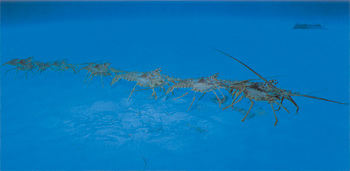
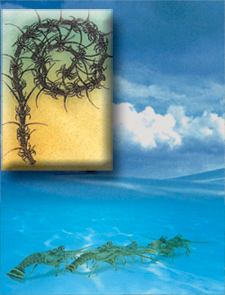
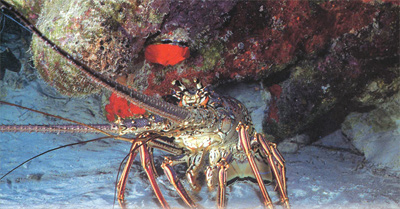
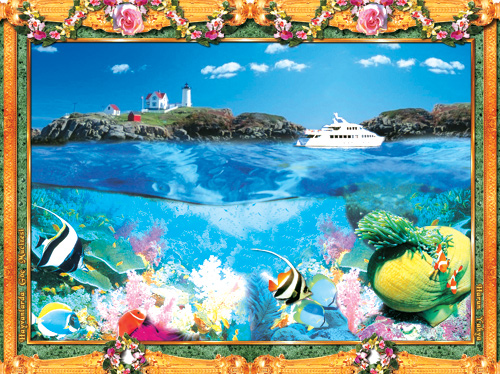

 Marine fish migrate in many different ways. One or more migrations are in progress at all times, be it a question of a few meters or hundreds of meters over either hours or days. The only common factor in these different journeys is the motive, since a great number of fish migrate regularly to feed.
Marine fish migrate in many different ways. One or more migrations are in progress at all times, be it a question of a few meters or hundreds of meters over either hours or days. The only common factor in these different journeys is the motive, since a great number of fish migrate regularly to feed.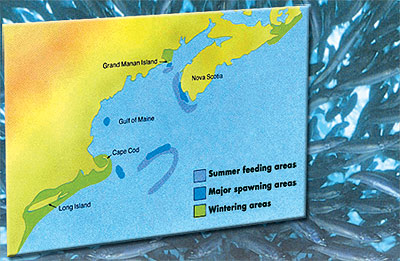
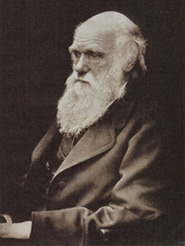

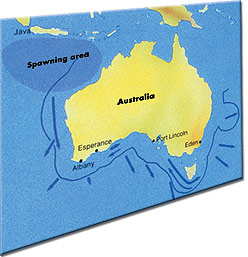
 Fish migrating from ocean to ocean make use of a number of different methods to navigate. Research conducted on coral reef fish has shown that they use coral outcrops to find their way. Scientists established that the fishes' regular migration route went over a particularly prominent piece of coral or rock, and when the rock was moved to a different position, the fish changed their route accordingly. Those species of fish migrating along the shore probably use a similar method to determine their route, swimming parallel to the shore and tracing the shape of the coast.
Fish migrating from ocean to ocean make use of a number of different methods to navigate. Research conducted on coral reef fish has shown that they use coral outcrops to find their way. Scientists established that the fishes' regular migration route went over a particularly prominent piece of coral or rock, and when the rock was moved to a different position, the fish changed their route accordingly. Those species of fish migrating along the shore probably use a similar method to determine their route, swimming parallel to the shore and tracing the shape of the coast.
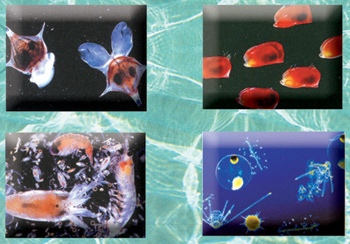
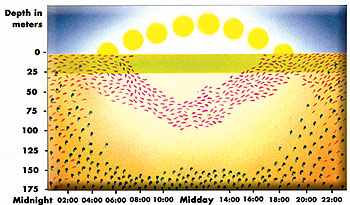

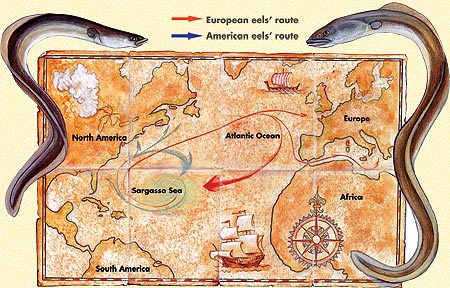





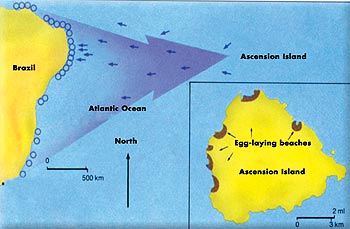
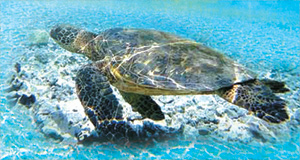
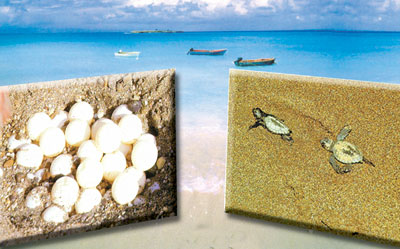 For the turtle to succeed in this migration for breeding purposes, memories of previous journeys must have been stored in her memory. How was this complex information stored? It is irrational and illogical to credit this perfect organization to the turtle's ability to remember after so many years. Doubtless, these animals were created together with their skills.
For the turtle to succeed in this migration for breeding purposes, memories of previous journeys must have been stored in her memory. How was this complex information stored? It is irrational and illogical to credit this perfect organization to the turtle's ability to remember after so many years. Doubtless, these animals were created together with their skills. Females do not usually breed in two consecutive years. Some species maintain an interval of at least two years and a maximum of eight years between breeding migrations. But when the time comes to go back to the breeding ground, the turtle returns to the same beach as before, almost 2,300 kilometers (1,500 miles) away. That these reptiles can find their way to this place thousands of kilometers away is one of the most miraculous aspects of migration.
Females do not usually breed in two consecutive years. Some species maintain an interval of at least two years and a maximum of eight years between breeding migrations. But when the time comes to go back to the breeding ground, the turtle returns to the same beach as before, almost 2,300 kilometers (1,500 miles) away. That these reptiles can find their way to this place thousands of kilometers away is one of the most miraculous aspects of migration. Not only do migrating turtles return to their birthplace after decades of oceanic wandering, but can also find their way home after being in the feeding grounds. Much research has been conducted on this, but results are inconclusive. All that is known is that in finding their way every time, these creatures show great intelligence.
Not only do migrating turtles return to their birthplace after decades of oceanic wandering, but can also find their way home after being in the feeding grounds. Much research has been conducted on this, but results are inconclusive. All that is known is that in finding their way every time, these creatures show great intelligence.